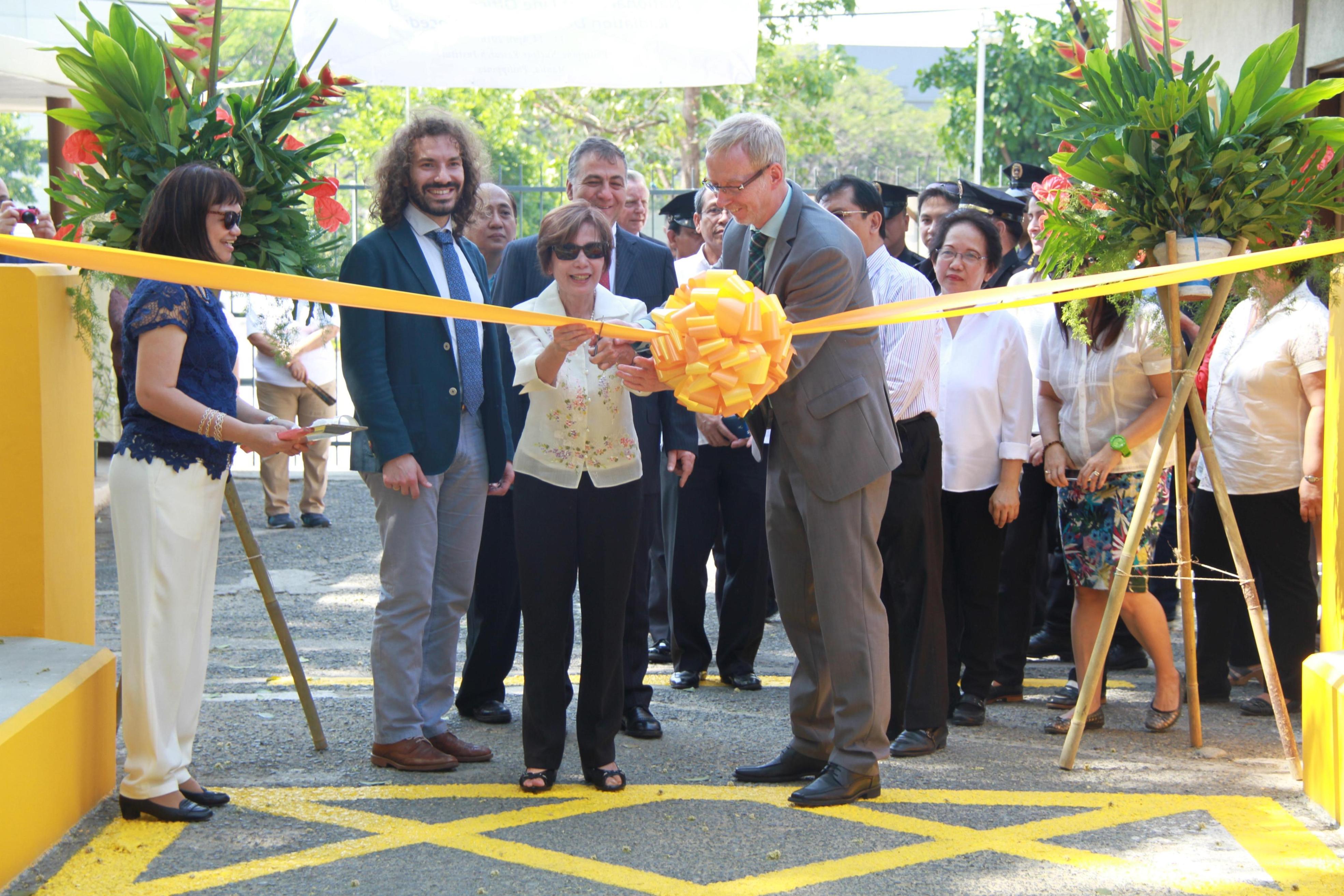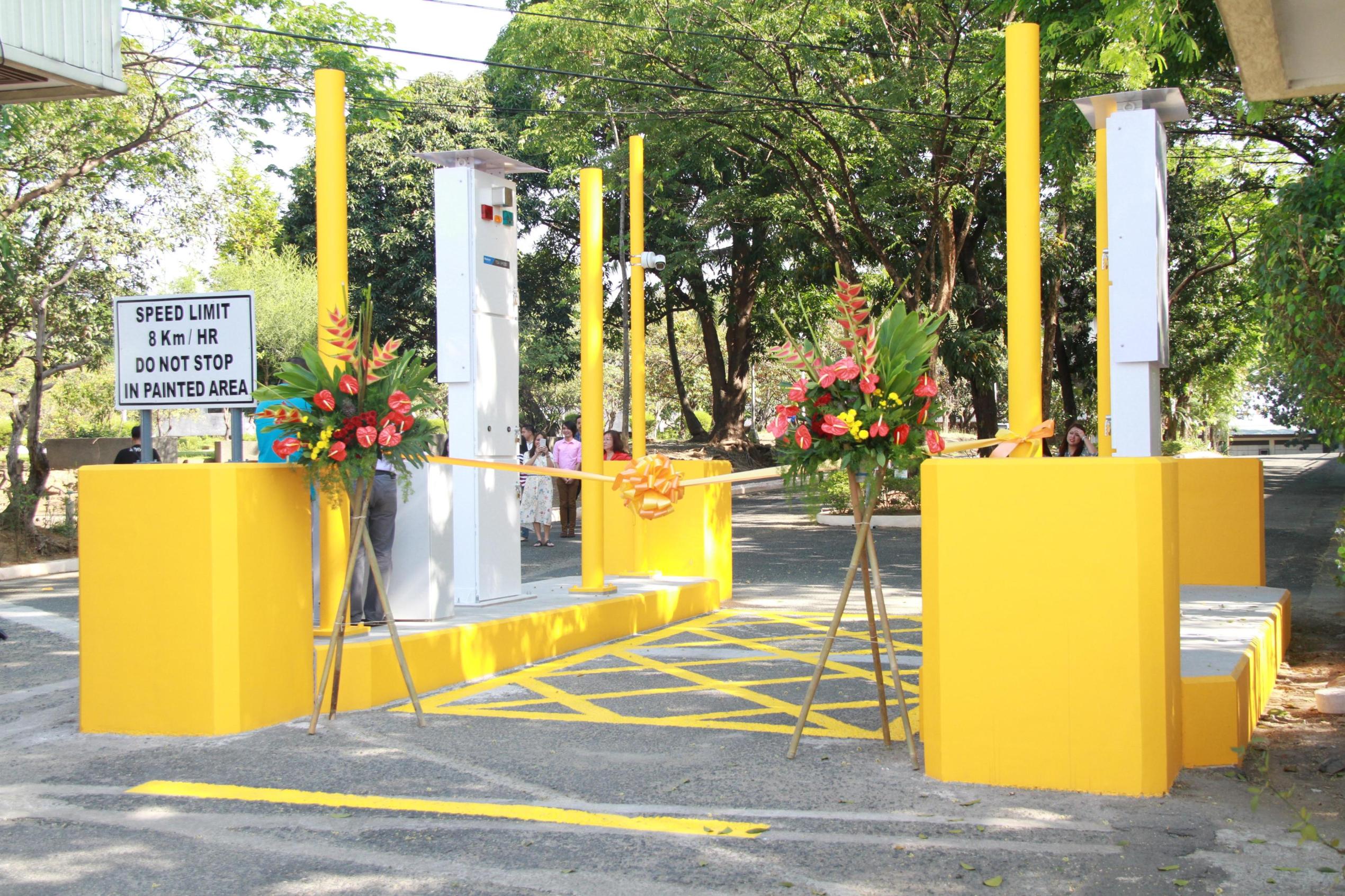
Mr. Achim Tillessen, Head of Development Cooperation at the Delegation of the European Union (EU) to the Philippines and PNRI Director Dr. Alumanda Dela Rosa with members of the PNRI Senior Staff and experts from the EU Joint Research Centre (JRC) during the ribbon-cutting for the inauguration of the Radiation Portal Monitor Training Facility at the front gate of PNRI

The Radiation Portal Monitor Training Facility recently established at the PNRI compound in Quezon City
PNRI Inaugurates the Radiation Portal Monitor (RPM) Training Facility
Heralding another high mark in the field of nuclear security, the Department of Science and Technology – Philippine Nuclear Research Institute (DOST-PNRI) inaugurated a Radiation Portal Monitor (RPM) Training Facility at the PNRI compound in Quezon City on April 11.
Established with the assistance of the European Union Joint Research Centre (EU JRC) and the United States Department of Energy (USDOE), the radiation portal monitor has similar capabilities to those of its larger counterparts deployed at the ports of Manila and Cebu under the Nuclear Smuggling Detection and Deterrence Program (formerly the Megaports Initiative) engaged in by the PNRI, Bureau of Customs (BOC) and the Philippine Ports Authority (PPA) since 2005. These RPMs are being used to detect possible illicit trafficking of nuclear and other radioactive materials coming through the busy Philippine ports, and are an invaluable asset to the port authorities.
To sustain these efforts, the RPM at PNRI will serve as a training facility for frontline officers from the BOC and port authorities involved in operating the RPMs stationed at the ports.
“The training facility that we are inaugurating today is an important new component of the nuclear security architecture of the country, as it ensures the sustainability of the training of our frontline officers,” said DOST Secretary Mario Montejo in his inaugural remarks.
“This joint project is indeed a fitting testament to the growing partnership between the EU and the Philippines over the past 25 years,” said Secretary Montejo.
The inauguration was attended by officials, representatives and experts from the European Union, National Security Council, BOC, PPA and the Cebu Port Authority, highlighting the strong linkages among local and international agencies that made the project possible.
“Deploying equipment and holding training courses are important for establishing a nuclear security culture but it is not enough. A harmonized approach and a national strategy as well as trained users and skilled experts are to be part of the efforts in order to reach long-term sustainability,” said Achim Tillessen, Head of Development Cooperation at the Delegation of the European Union to the Philippines.
The EU official highlighted the excellent and close cooperation of the EU with PNRI not only in nuclear security but also in emergency preparedness and response. He also congratulated the Philippines for receiving the Atoms for Peace award during the 4th Nuclear Security Summit on April 1.
The inauguration was immediately followed by the opening of the National Frontline Officer Training on Radiation Detection Techniques and Procedures, which was concluded on April 14.












































